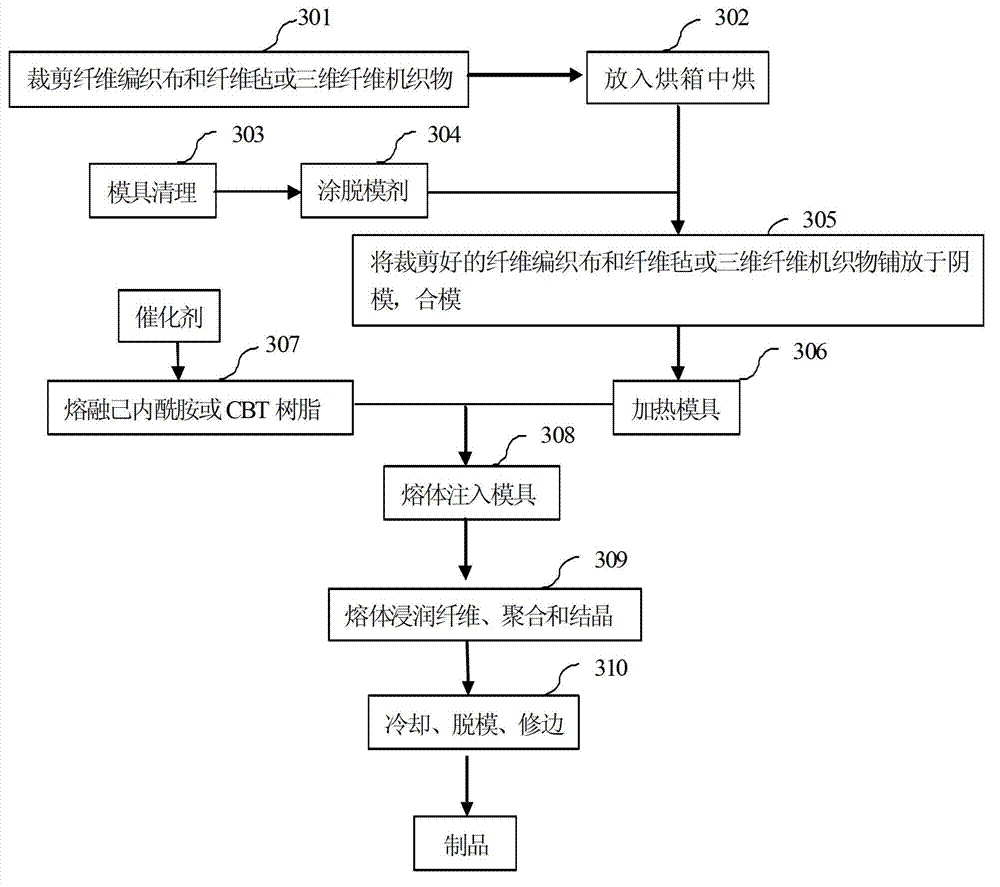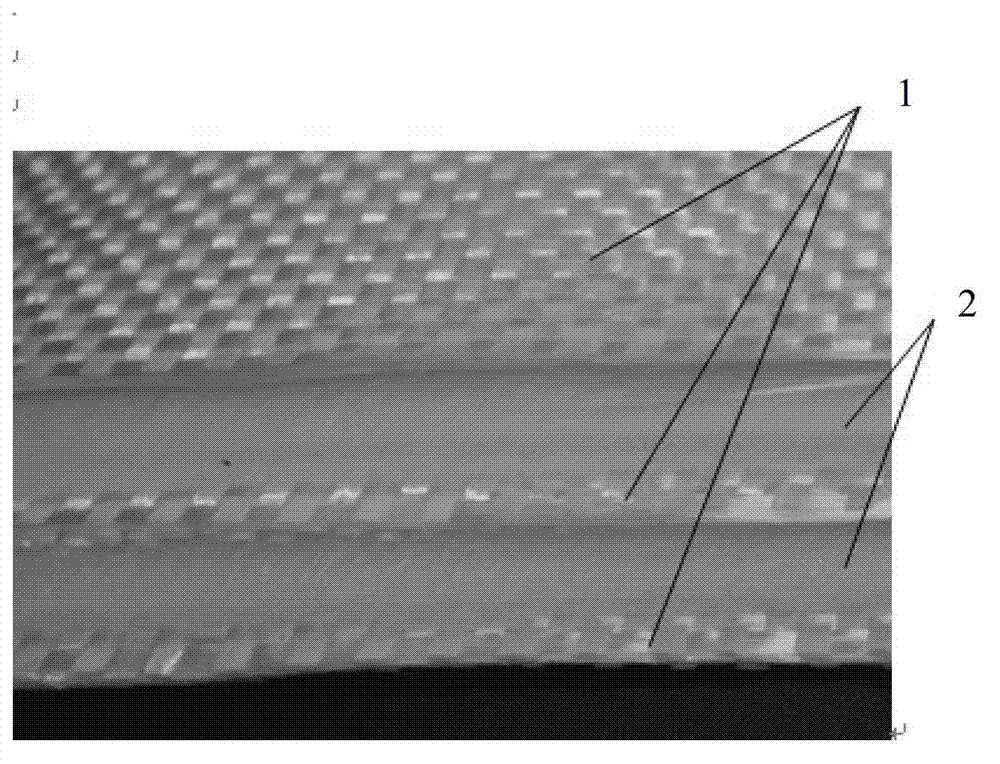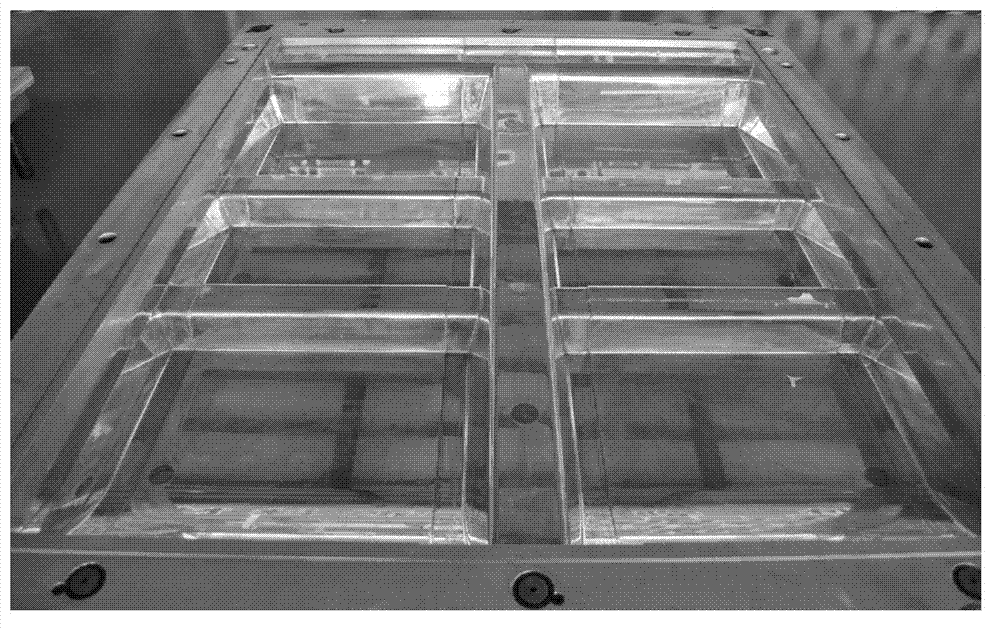Method capable of reducing the surface defects of fiber reinforced thermoplastic composite products
A composite material and fiber-reinforced technology, which is applied in the field of reducing surface defects of fiber-reinforced thermoplastic composite materials and fiber-reinforced thermoplastic composite materials, can solve problems such as easy high-temperature oxidation, high viscosity, and poor fluidity, so as to reduce the effect and improve the qualified rate , The effect of speeding up the batch industrial production process
- Summary
- Abstract
- Description
- Claims
- Application Information
AI Technical Summary
Problems solved by technology
Method used
Image
Examples
Embodiment 1
[0073] The implementation steps of the present embodiment method are as follows:
[0074] 1. Cut the fiberglass plain weave and fiberglass mat according to the size of the car floor mold.
[0075] 2. Put the cut glass fiber plain weave cloth and glass fiber felt in an oven for 3 hours at 120°C.
[0076] 3. Will be as image 3 The surface of the automobile floor mold shown is cleaned and polished smoothly, and the mold release agent is evenly coated on the surface of the mold.
[0077] 4. Lay the cut 6 layers of glass fiber plain weave cloth (referred to as cloth) and 8 layers of glass fiber felt (referred to as mat) in the female mold in the following stacking manner from top to bottom: cloth / felt / cloth / felt / felt / cloth / felt / felt / cloth / felt / felt / cloth / felt / cloth, and as shown in Table 1 below, the unit area grammage of the laminate formed after the lamination of the plain weave cloth and the fiber felt is 4000 ( g / m 2 ).
[0078] 5. Close the female and male molds.
[00...
Embodiment 2
[0089] The implementation steps of the method in this embodiment are the same as in Example 1, except that the glass fiber plain cloth used in step 2 has only 5 layers, and the glass fiber mat has only 4 layers, and is laid on the female mold in the following stacking manner from top to bottom Middle: cloth / felt / cloth / felt / cloth felt / cloth / felt / cloth, as shown in Table 1, the weight per unit area of the laminate formed after the lamination of the plain weave cloth and the fiber felt is 2800 (g / m 2 ); the mold of step 1 and 3 is the automobile trunk lid mould; the product that step 10 obtains is as follows Figure 6 car trunk lid products.
PUM
 Login to View More
Login to View More Abstract
Description
Claims
Application Information
 Login to View More
Login to View More - R&D
- Intellectual Property
- Life Sciences
- Materials
- Tech Scout
- Unparalleled Data Quality
- Higher Quality Content
- 60% Fewer Hallucinations
Browse by: Latest US Patents, China's latest patents, Technical Efficacy Thesaurus, Application Domain, Technology Topic, Popular Technical Reports.
© 2025 PatSnap. All rights reserved.Legal|Privacy policy|Modern Slavery Act Transparency Statement|Sitemap|About US| Contact US: help@patsnap.com



